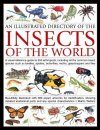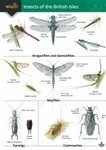Field / Identification Guide Popular Science
Out of Print
By: Martin Walters(Author)
192 pages, 680 colour photos and colour illustrations
![Illustrated Directory of Insects of the World Illustrated Directory of Insects of the World]()
Click to have a closer look
About this book
Biography
Related titles
About this book
This is an authoritative visual dictionary of every order of the insect world including beetles, cockroaches, flies, crickets, wasps, bees, moths and butterflies, as well as spiders, mites, ticks, centipedes and microscopic creatures. It features a stunning worldwide directory detailing more than 650 arthropod species, with accurate descriptions to aid identification. It includes an in-depth look at insect defence methods such as camouflage, claws for nipping, mouth parts for biting and chewing, stings, hissing noises and warning hues that suggest danger to deter predators.
Every stage of the life cycle of each group of insects is described, with illustrations depicting different development phases from egg to larva, pupa and adult. Insects belong to a group known as arthropods, which includes many easily recognizable families such as beetles, flies, wasps, stick insects, dragonflies and ants. This beautifully illustrated guide provides a fascinating overview of the world of arthropods. A directory of arthropod species is organized according to geographical region, then by taxonomic order.
Every insect type is included, from the tiniest wingless creature to the largest and most spectacular beetle. Many are illustrated with detailed artworks. Each entry gives a profile outlining the physical traits and characteristics of each insect. Identification details are provided, with a description of their habitat. This expert text visual reference guide will be enjoyed by all natural history enthusiasts.
Customer Reviews
Biography
Martin Walters is a writer, editor and naturalist. After studying zoology at Oxford University, he worked as a biological sciences editor at Cambridge University Press, where he was responsible for developing the botany, ecology and natural history lists. He is a keen field naturalist, with a special interest in botany, bird habitats and conservation.
Field / Identification Guide Popular Science
Out of Print
By: Martin Walters(Author)
192 pages, 680 colour photos and colour illustrations



































